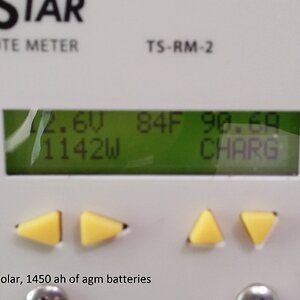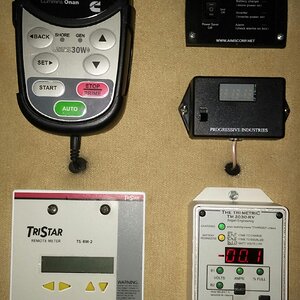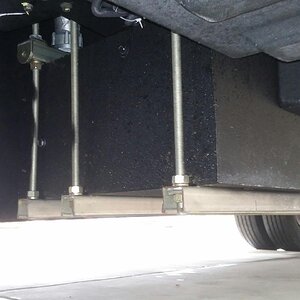My wife has expressed an interest in an RV travel trailer. I'm curious of the capability of our current equipment, as well as some information and experience you folks have had in your endeavors:
2019 Tahoe
5.3L V8
Axle ratio 3.08
Standard trailering package (not the max trailering package).
Please bear with me while I set this up:
Dealer's keep telling me "it is specified to tow up to 6400 lbs". I think they got the number with some math of the available specs:
GCVR : 12000
GVWR: 7300
Curb: 5602
GCVR - curb = ~6400 (rounded up)
I weighed my Tahoe, full tank with kids seats and other daily crap, no passengers:
actual curb : 5641
As an experiment, I picked a trailer with a dry weight of 4698: Grand Design Imagine XLS 21BHE
After weighing some travel items and doing some calculations, I think i am still within specs:
Vehicle Capacity : (GVWR - (Curb + tahoe payload + tongue)) > 0
After calculations, this equation comes to : 340.9lbs to spare (within spec)
Towing Capacity: (GCWR - (Curb + tahoe payload + trailer UVR + trailer payload)) > 0
After calculations, this equation comes to: 52.9lbs to spare ( i can move some things around to get this number closer to 300 lbs)
I've had difficulty finding anyone at the dealership who is willing to have a technical discussion.
We love the mountains, and would like to set up camp there.
I've tried to remain conservative, but the question remains:
Without the max trailering package (increasing capacity by 2K), assuming I remain within the specs, is this a safe, legal and practical endeavor?
Anyone out there with similar specs who tows a comparable camper?
Aside from a trailer brake controller, any other must-have additions?
What do have in your RV when you tow?
I've attached my spreadsheet, feel free to tell me i'm an idiot, but please tell me why as well. I'm well aware that i cut twice and say "its still too short!".
Thanks in advance. I've already learned alot reading through these posts.
-mb
2019 Tahoe
5.3L V8
Axle ratio 3.08
Standard trailering package (not the max trailering package).
Please bear with me while I set this up:
Dealer's keep telling me "it is specified to tow up to 6400 lbs". I think they got the number with some math of the available specs:
GCVR : 12000
GVWR: 7300
Curb: 5602
GCVR - curb = ~6400 (rounded up)
I weighed my Tahoe, full tank with kids seats and other daily crap, no passengers:
actual curb : 5641
As an experiment, I picked a trailer with a dry weight of 4698: Grand Design Imagine XLS 21BHE
After weighing some travel items and doing some calculations, I think i am still within specs:
Vehicle Capacity : (GVWR - (Curb + tahoe payload + tongue)) > 0
After calculations, this equation comes to : 340.9lbs to spare (within spec)
Towing Capacity: (GCWR - (Curb + tahoe payload + trailer UVR + trailer payload)) > 0
After calculations, this equation comes to: 52.9lbs to spare ( i can move some things around to get this number closer to 300 lbs)
I've had difficulty finding anyone at the dealership who is willing to have a technical discussion.
We love the mountains, and would like to set up camp there.
I've tried to remain conservative, but the question remains:
Without the max trailering package (increasing capacity by 2K), assuming I remain within the specs, is this a safe, legal and practical endeavor?
Anyone out there with similar specs who tows a comparable camper?
Aside from a trailer brake controller, any other must-have additions?
What do have in your RV when you tow?
I've attached my spreadsheet, feel free to tell me i'm an idiot, but please tell me why as well. I'm well aware that i cut twice and say "its still too short!".
Thanks in advance. I've already learned alot reading through these posts.
-mb












